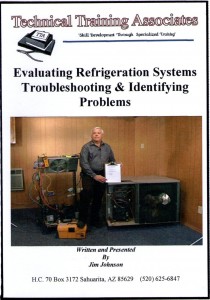Too often we find ourselves making important decisions based on cost, not value. Ironically value engineering has become a common term used by cost-conscious building owners and specifiers as they move away from plumbing materials with proven performance track records, toward reinvented, cheaper and, most of the time, inferior products.
This is more like cost engineering. My team out in the field is continuing to see this issue arise among municipality leaders and homeowners seeking to economically remove lead from their drinking water systems. The initial material cost always seems to play an oversized role in the decision. So, how do we as an industry lead decision makers away from the Band-Aid approach and toward the long-term solution?
The first step is to identify the material or system that is creating a road block to the actual solution. As you can imagine, rectifying the lead drinking water problem is a daunting task. It can be hard for material decision makers to look past the initial cost savings of installing filtration systems or plastic pipes, but it is in their best interest to make decisions for the life cycle of the infrastructure.
The spotlight fell on the city of Flint, Mich., in 2016 as its lead drinking water crisis made international news. Municipality leaders watched to see how Flint would handle its crisis as reports revealed that the lead issue stretched beyond the city’s border. In fact, six million to 10 million lead service lines are in need of replacement across North America.
Flint had three options:
- Try to remove the lead from the water, but not the system and simply install water filters
- Replace service lines with plastic pipes (the cheaper piping material that only has a lifespan of approximately 25 years and could allow harmful chemicals to leach into the drinking water)
- Use copper tube to replace the service lines (copper protects the water from exposure to outside contaminants, is made of 99.9 percent pure copper — a natural material with well-known properties — and has a proven lifespan of 75-100 years).
Education
As Flint moved from crisis mode to replacement mode, the Copper Development Association did not insist that the city use copper. Instead, we took an educational approach. We met with Mayor Karen Weaver and Michael C. McDaniel on several occasions to provide technical assistance in the city’s analysis of service line rehabilitation and replacement options.
It would be a mistake to allow municipalities and building owners to simply make replacement choices based on lowest first cost. Despite trying to do the right thing economically, the material choice could lead to unintended consequences, including premature system failure as well as potentially contaminating the drinking water. The initial cost of a copper pipe may be three times that of a plastic one, but the material cost represents only about five percent of the cost of replacing an underground line. Over the expected service life, a copper service line is many times less expensive than its plastic counterpart.
After an in-depth analysis, Flint chose copper as its lead service line replacement material to ensure the delivery of safe drinking water to its residents and to build a lasting water infrastructure system for the next 100 years of service.
Assistance
The copper industry is committed to helping America rebuild its aging water infrastructure. We will continue to provide technical guidance and educational resources wherever needed to ensure that copper piping systems are designed, installed and operated properly every step of the way.
These same steps can be applied to your business when you start to see building owners or specifiers thinking with their pocketbooks instead of the facts.










